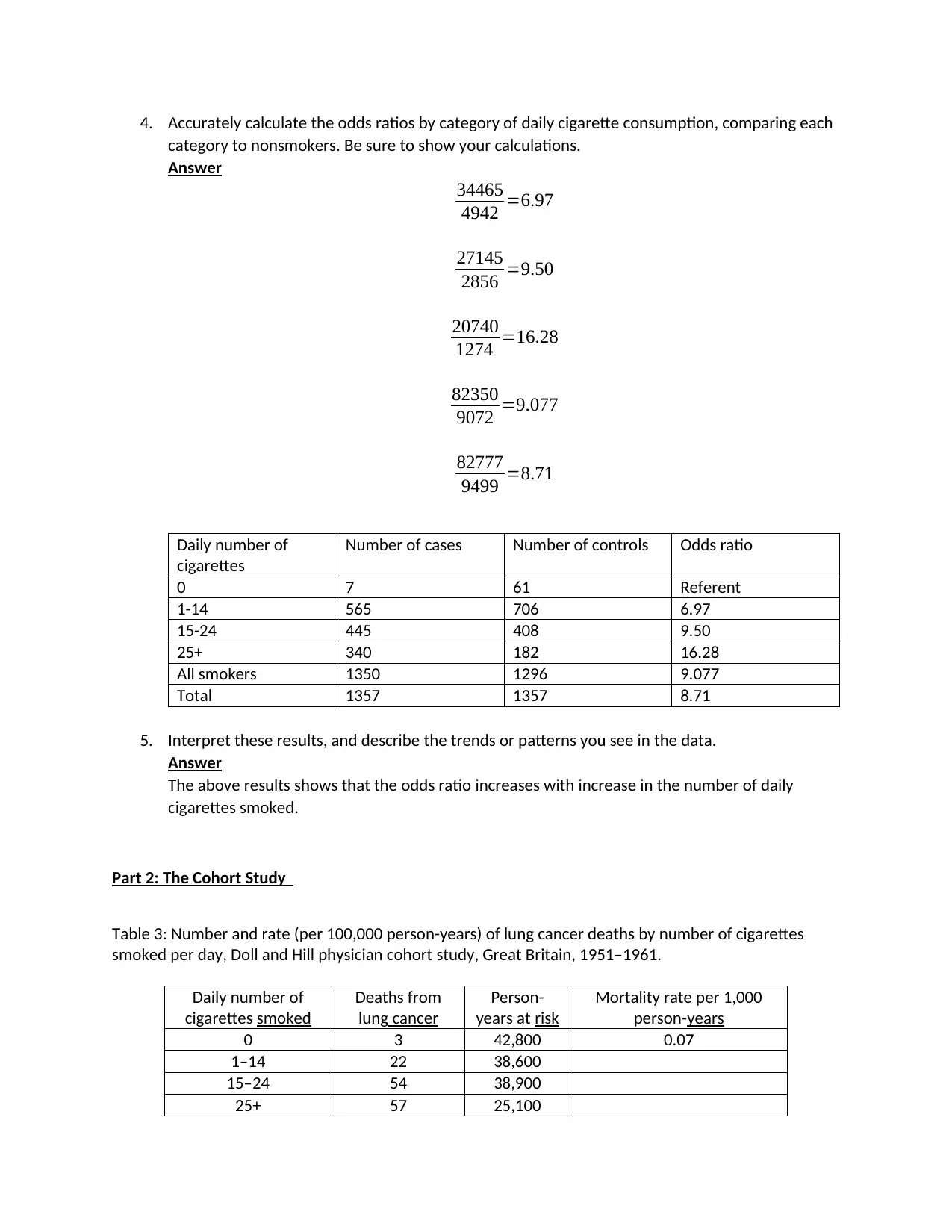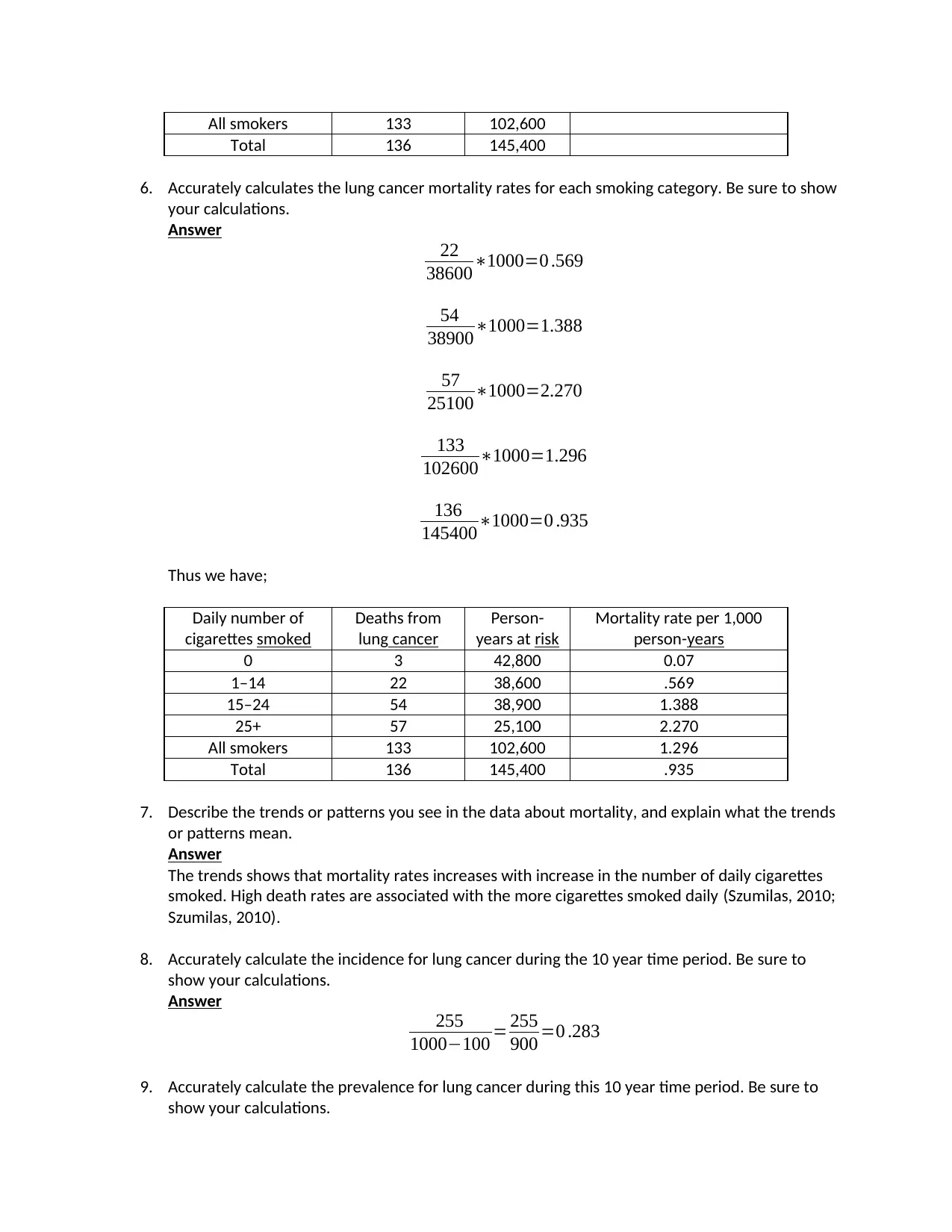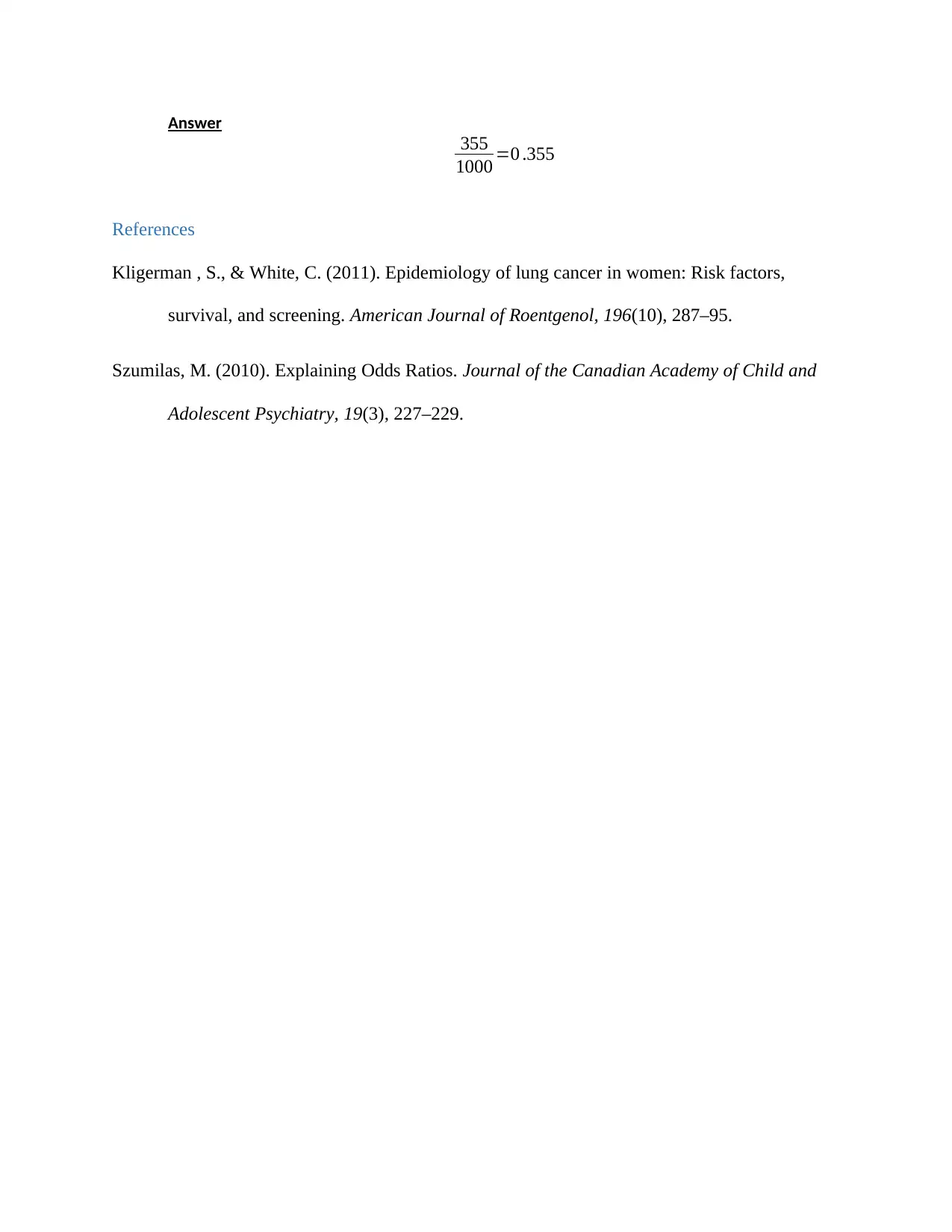Public Health Study: Analyzing Smoking's Link to Lung Cancer
VerifiedAdded on 2022/11/17
|4
|632
|420
Homework Assignment
AI Summary
This assignment analyzes the relationship between cigarette smoking and lung cancer using both case-control and cohort study designs. Part 1 focuses on a case-control study, calculating the proportion of cases and controls who smoked, the odds ratio, and interpreting the association between smoking and lung cancer. Odds ratios are calculated for different categories of daily cigarette consumption, revealing trends in risk. Part 2 examines a cohort study, calculating and interpreting lung cancer mortality rates for various smoking categories, demonstrating the increasing risk with higher cigarette consumption. The assignment includes calculations of incidence and prevalence rates, providing a comprehensive analysis of smoking's impact on lung cancer risk and mortality within a public health context.
1 out of 4





![[object Object]](/_next/static/media/star-bottom.7253800d.svg)